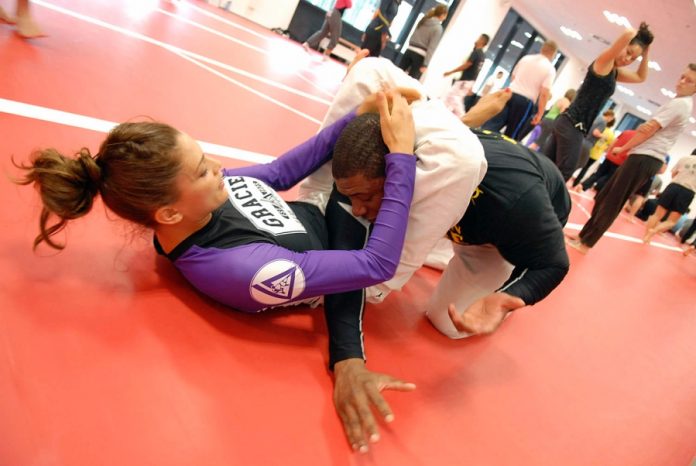
Ah, the triangle. One of the core submissions of Brazilian Jiu-Jitsu and a true mark of the art. the triangle choke is a powerful, fairly simple and extremely effective submission. It is a blood choke, cutting off the brain’ supply of blood and can render someone unconscious in seconds. It is such a huge part of the sport of Jiu-Jitsu that many schools have it as their logo. think about it, how many schools around the globe have a triangle shaped academy logo? There’s a reason the triangle features so much in grappling – it works. And it doesn’t just work from the guard, traditional style. There are plenty of triangle chokes to go round, some more difficult than the others. What’s certain, is that it works.
Since the earliest days of Brazilian Jiu-Jitsu, the triangle has been one of the most potent weapons to submit an opponent. As Jiu-Jitsu grew, so did the use of triangle chokes. Across all competition formats, whether it is Gi BJJ, No-Gi grappling or MMA, triangles work like a charm once you slap them on. Furthermore, they work equally as effective at white, as they do at the black belt level, which is not often the case in BJJ. The triangle choke is one of the highest percentage, most reliable techniques you can do.
For quite some time, people with a stockier build had trouble synching up the triangle. It is not that the move doesn’t work, but getting there proved to be a real nuisance for some grapplers. Thankfully, Jiu-Jitsu’s constant evolution provided the answer to this problem. Nowadays, there are several triangles chokes to choose from. Work from all positions in grappling and can finish even the most experienced of opponents.
How Triangle Chokes Work
The basic principle behind triangle chokes is simply. They are all blood chokes that involve placing pressure on both sides of the neck. The result is constriction of the carotid arteries and subsequent loss of consciousness due to lack of oxygen in the brain. In order to exert the pressure on the arteries, Jiu-Jitsu relies on a triangle-like structure to make sure there’s no way out. The shape of the triangle ensures that there’s no pulling away from the pressure on the neck.
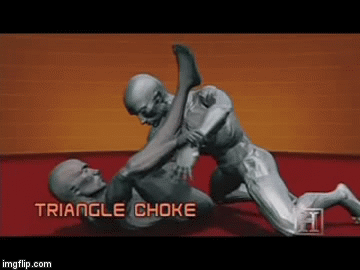
Actually, it is the opponent’s own shoulder that makes this choke work. On the other side, it is the thigh of your leg. The shin of that same leg goes across the back of the opponent’s neck. Finally, your other leg locks both your leg and the trapped arm in place. This is the basic structure of a triangle choke.
In order for it to work, though, you need a way to apply pressure. Form the aforementioned position of guard, once you have the triangle you need to make sure you prevent your opponent from posturing up. To do that, simply use both of your hands to pull their head towards you. In order to choke from the basic triangle remember to focus on squeezing your knees close instead of looking to put downward pressure.
Variations Of The Triangle Choke
By variations of the triangle chokes, I do not mean finishing the regular triangle choke from different positions. For the sake of this article, we’re going to put all those modifications in the “basic” triangle category. Namely, you can easily hunt for a triangle choke from mount, side control, half guard etc., creating numerous opportunities along the way. The mechanics of the choke stay the same, though, meaning if you struggle with it from guard, you’ll struggle with it form the mount.

Luckily, there is a great triangle chokes to help you improve your finishing rate. While most people have modifications of variations of their own, their area few that work just as well, if not better than the basic. Thos are the reverse triangle, the inverted triangle, the rear triangle, and the no-arm triangle chokes.
Inverted Triangle
The inverted triangle choke is one popularized by the prolific Estima brothers. Braulio and Victor Estima have the reputation of destroying top-level opponents with this variation. As far as triangle chokes go, the mechanics of the inverted one are fairly simple to grasp. You just place everything in reverse. Well, kind of.
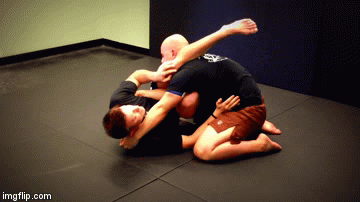
In order to exert choking pressure on your opponent, you have to scoot your butt towards the opponent’s hips, tilting them forward. this will get them that much deeper into the choke and give you more space to tighten and adjust. For a finish, pull their trapped arm’s triceps towards yourself.
Reverse Triangle
The reverse triangle is as close to the basic triangle choke as possible. For this variation, you need to be in the top turtle position. When an opponent is stubbornly defending back attacks, you can think about switching things up. What you should look for is to thread the nearside leg under the opponent’s head and all the way around. The aim is to secure your ankle on the top with your opposite side arm.
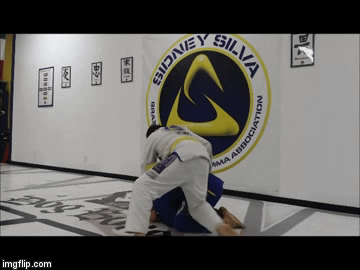
Rear Triangle Choke
Out of all triangle chokes I know, this one is by far my favorite. it is a very cool way of dealing with an ultra-defensive opponent’s when you have back control. Sometimes you just can’t finish a choke, or you’re up against a top-class hand fighting expert. This is when you’re going to hit a rear triangle.
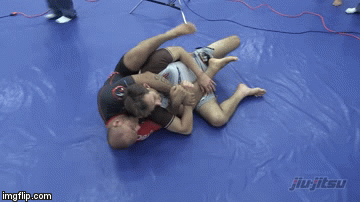
No Arm Triangle
Finally, a triangle that goes a bit against the rules of triangle chokes. It’s a very useful one for situations in which your opponent gets their arm out of a regular triangle. As we discussed earlier, once the arm is out there’s space inside the triangle structure that scuppers the choke.
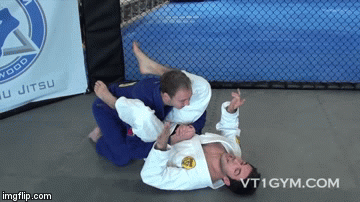
Video Source: 1. video, 2. video, 3. video, 4. video, 5. video
DVD and DIGITAL Instructionals Related to Triangle Chokes :


![Darce Choke Encyclopedia – Origins, Mechanics and Variations [2025] BJJ, choke, Brabo, BJJ Darce Choke, D'arce Choke, Darce BJJ Choke](https://bjj-world.com/wp-content/uploads/2017/11/JungPoirierLeeYahoo-218x150.jpg)









![Defensive Wrestling for Jiu-Jitsu Pat Downey DVD Review [2025] Defensive Wrestling for Jiu-Jitsu Pat Downey DVD Review](https://bjj-world.com/wp-content/uploads/2025/04/defensive-wrestling-for-jiu-jitsu-pat-downey-dvd-review-218x150.png)

![Mastering Your Sales Eliot Marshall DVD Review [2025] Mastering Your Sales Eliot Marshall DVD Review](https://bjj-world.com/wp-content/uploads/2025/04/mastering-your-sales-eliot-marshall-dvd-review-218x150.png)

![Modernized Headquarters Passing Shawn Melanson DVD Review [2025] Modernized Headquarters Passing Shawn Melanson DVD Review](https://bjj-world.com/wp-content/uploads/2025/04/headquarters-passing-shawn-melanson-dvd-review-218x150.png)
![4 Weeks To A Better Guard Travis Stevens DVD Review [2025] 4 Weeks To A Better Guard Travis Stevens DVD Review](https://bjj-world.com/wp-content/uploads/2025/04/4-weeks-to-a-better-guard-travis-stevens-dvd-review-218x150.png)
![BJJ Foundations Mikey Musumeci DVD Bundle Review [2024] BJJ Foundations Mikey Musumeci DVD Bundle Review](https://bjj-world.com/wp-content/uploads/2024/09/bjj-foundations-mikey-musumeci-dvd-bundle-review-324x235.png)



![Unpinnable Mount Escape Mastery Haleem Syed DVD Review [2025] Mount Escape Mastery Haleem Syed DVD Review](https://bjj-world.com/wp-content/uploads/2025/01/mount-escape-mastery-haleem-syed-dvd-review-100x70.png)

![Heavy Top Game Fabiano Scherner BJJ DVD Review [2025] Heavy Top Game Fabiano Scherner BJJ DVD Review](https://bjj-world.com/wp-content/uploads/2025/01/heavy-top-game-fabiano-scherner-bjj-dvd-review-100x70.png)
![Zen Guide To Submission Grappling Margot Ciccarelli DVD Review [2025] Zen Guide To Submission Grappling Margot Ciccarelli DVD Review](https://bjj-world.com/wp-content/uploads/2025/02/submission-grappling-margot-ciccarelli-dvd-preview-100x70.png)
![Darces From Everywhere Kade and Tye Ruotolo DVD Review [2024] Darces From Everywhere Kade and Tye Ruotolo DVD Review](https://bjj-world.com/wp-content/uploads/2024/10/darces-from-everywhere-kade-and-tye-ruotolo-dvd-cover-100x70.png)



![Foot Sweep the World Dainis Nguyen-Huu DVD Review [2024] Foot Sweep the World Dainis Nguyen-Huu DVD Review](https://bjj-world.com/wp-content/uploads/2024/11/foot-sweep-the-world-dainis-nguyen-huu-dvd-review-100x70.png)
![No-Gi Pressure Mastery JT Torres DVD Review [2024] No-Gi Pressure Mastery JT Torres DVD Review](https://bjj-world.com/wp-content/uploads/2024/10/no-gi-pressure-mastery-jt-torres-dvd-review-100x70.png)

![Lockdown Quickstart Guide Cameron Mellott DVD Review [2025] Lockdown Quickstart Guide Cameron Mellott DVD Review](https://bjj-world.com/wp-content/uploads/2025/03/lockdown-quickstart-guide-cameron-mellott-dvd-review-100x70.png)
![Advantage Over Time Outside Passing Jozef Chen DVD Review [2025] Advantage Over Time Outside Passing Jozef Chen DVD Review](https://bjj-world.com/wp-content/uploads/2025/03/outside-passing-jozef-chen-dvd-review-100x70.png)
![Wrestling For Jiu-Jitsu Shawn Williams DVD Review [2025] Wrestling For Jiu-Jitsu Shawn Williams DVD Review](https://bjj-world.com/wp-content/uploads/2025/01/wrestling-for-jiu-jitsu-shawn-williams-dvd-review-100x70.png)



![Kill The Underhook Dima Murovanni DVD Review [2024] Kill The Underhook Dima Murovanni DVD Review](https://bjj-world.com/wp-content/uploads/2024/10/kill-the-underhook-dima-murovanni-dvd-review-100x70.png)

![Tiny Woman Guide To The Guard Ann Kneib DVD Review [2024] Tiny Woman Guide To The Guard Ann Kneib DVD Review](https://bjj-world.com/wp-content/uploads/2024/11/tiny-woman-guide-to-the-guard-ann-kneib-dvd-review-100x70.png)

![Grappling Takedown Dominance Brandon Ruiz DVD Review [2025] Grappling Takedown Dominance Brandon Ruiz DVD Review](https://bjj-world.com/wp-content/uploads/2025/01/grappling-takedown-dominance-brandon-ruiz-dvd-review-100x70.png)
